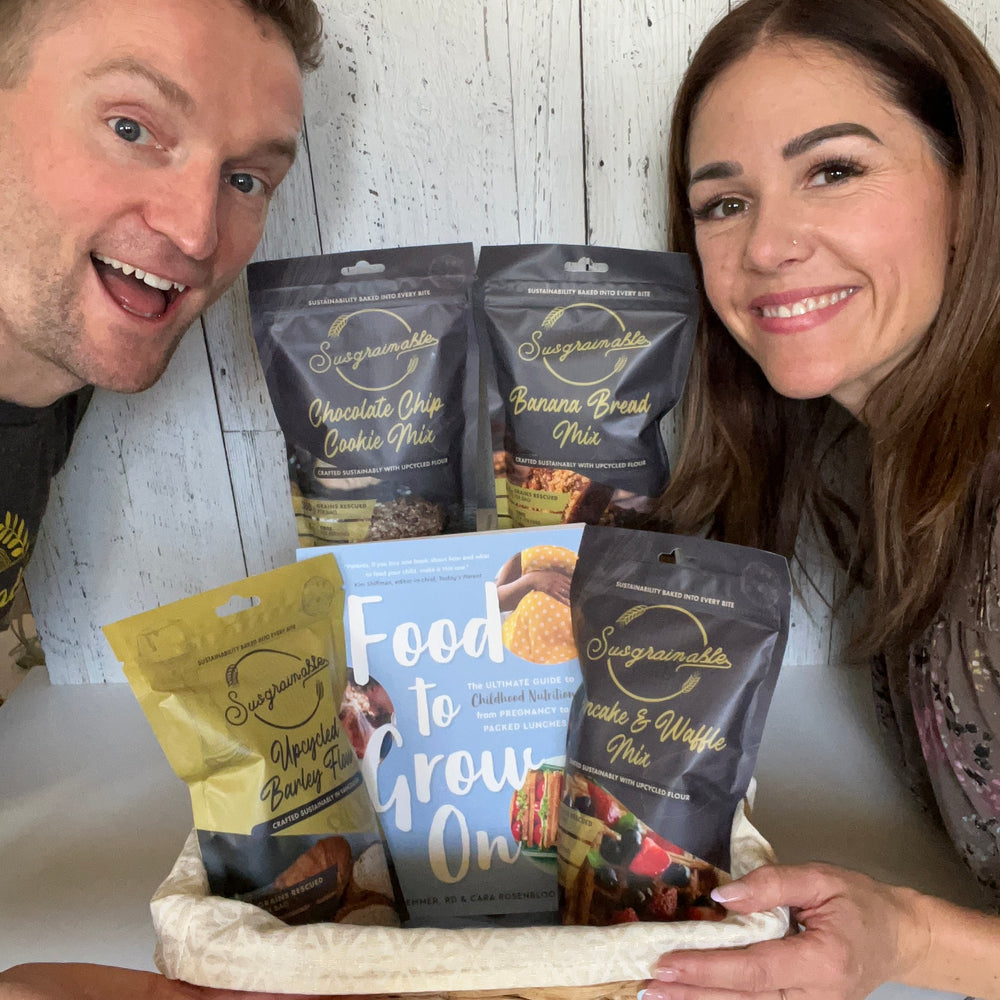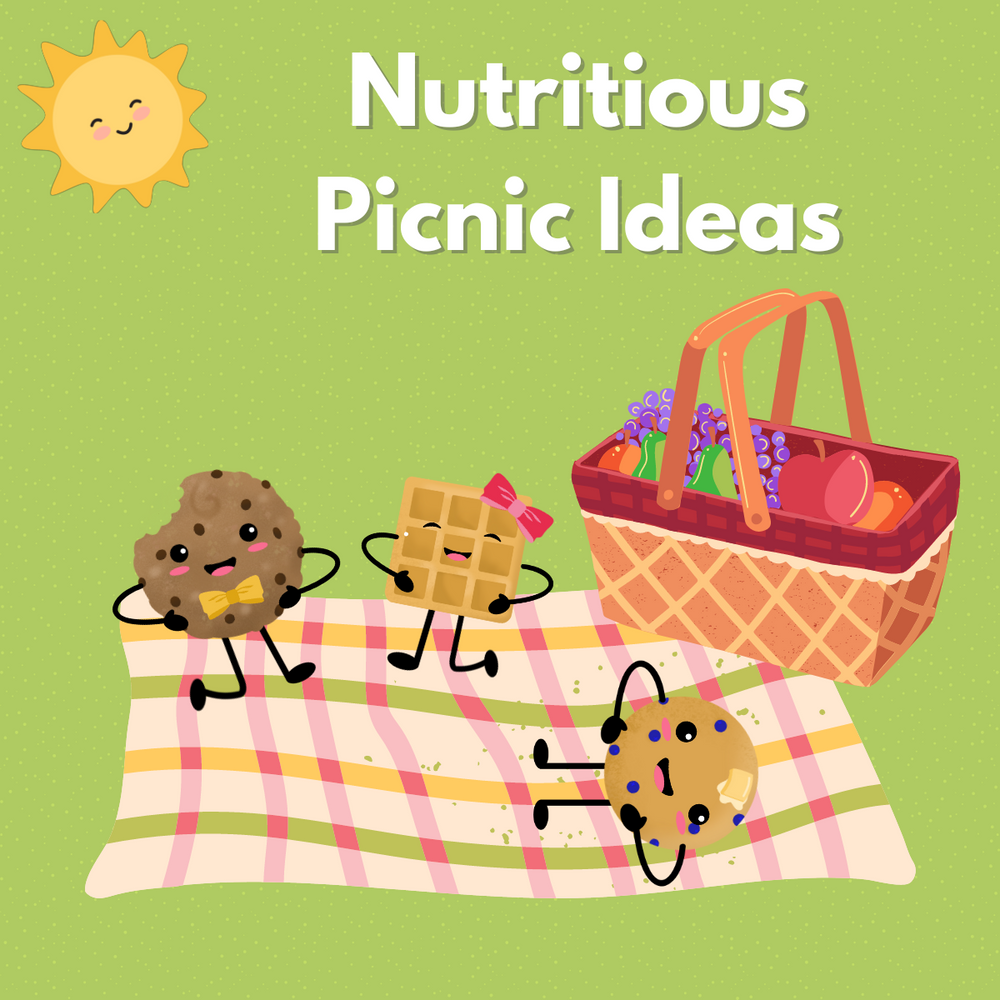Summer Snacking Tips for Kids (from a Dietitian Mom)

The warmer weather is upon us, and the school year is wrapping up which means some adjustments to our summer routines. Surely as parents you can relate to the relentless snack requests ALL THE TIME! Little hands in boxes and packages, and fridge and pantry doors opening and closing constantly… can anyone relate?
If you are looking for some strategies to help make summer snacking simpler, more structured and stress-free, read on! As a pediatric dietitian and mom of 3 myself, I want to help to make your life easier and help you to maximize your fun time outside with your kiddos!
Here are my top tips and ideas for snacking during the summer months:

1) Establish a Predictable and Consistent Meal/Snack Schedule
Implementing regular eating times will help to manage the constant snack requests and possible hangry meltdowns. Especially when we consider our little ones, who have smaller stomachs and are likely still learning to love a variety of foods (aka picky eaters) .
Kids should be offered eating opportunities at regular intervals throughout the day – every 2-3 hours for toddlers and preschoolers and 3-4 hours for our older school-aged kiddos. Setting predictable eating times (and even writing them out on a white board or chalk board for all to see), helps everyone to be on the same page, and can help to manage our kids’ expectations . It helps to build trust with our kids, so that they know there are regular and consistent eating opportunities, while also giving time between meals and snacks for our kids to build an appetite and learn how to self-regulate.
It may take a little planning, but sticking to a routine throughout the day (especially when your summer plans take you away from home) will make navigating the snack world a little more predictable and less hectic.
2) Make sure snacks are SATIATING
Here’s an interesting fact: Your child will likely be more hungry during the summer months. Why? Because warmer weather means more outside activity and increased energy expenditure. Can you relate to the voracious appetite after an afternoon spent at a beach or pool?
This means that kids need snacks that pack a punch nutrition-wise, but also offer satiety. Satiating nutrients include protein (meat, fish, dairy, beans, lentils, nuts and seeds), fibre (whole grains, fruits and veggies, nuts and seeds), and dietary fat (nuts, seeds, avocado, oil, higher-fat dairy).
Protein, fibre and fat take longer to travel down the digestive tract, which helps keep kids fuller longer. The perfect combination to manage hearty appetites, stabilize blood sugar and energy levels would be a “mini meal” consisting of a protein food paired with a whole grain AND/OR a fruit or vegetable.
Consider some of these snack options:
- Greek yogurt with berries and granola
- Susgrainable’s banana bread + cheddar cheese and melon
- Apples and/or pears with a nut butter and whole grain crackers
- High fibre crackers, deli meat and cheese
- Susgrainable’s chocolate chip cookies paired with Greek Yogurt and banana slices
- Watermelon + homemade trail mix

3) Take some snacking shortcuts:
Parenting can throw us all kinds of curveballs, but we can never be overprepared. Or can we??
Being prepared with a stocked pantry and fridge, and having some tried-and-true shortcuts can make those last minute “oh-no-I-forgot-about-snacks” moments (or last minute playdates) easier to manage.
Here are three of our favourite shortcuts to simple summer snacking!
Baking Mixes: There’s nothing better than a baking mix, that I can literally throw into a bowl with a couple of other easy ingredients and make something nutritious and homemade. As a Mom, these are lifesavers. Susgrainable’s Banana Bread Mix is a go-to for us (my kids LOVE it) and it’s so easy to customize it with things like berries, chocolate chips, or nuts to switch it up! You can also make this mix into muffins instead, which are great for on-the-go. I love how high in fibre and protein Susgrainables mixes are, and they easily pair with other protein foods like cheese, yogurt, milk and nuts.

If you’re a batch-baker like me, you can make several batches ahead of time, and freeze them so you have some quick snack options to defrost and enjoy on busy days.
Homemade trailmix: Trailmix is a definite household favourite around here! We stock up on dried and freeze-dried fruit, whole grain cereals, nuts and seeds and whole grain cereal to mix and match in our trailmixes. Fun idea: offer in a muffin tin, and let your child make their own! Or toss all the ingredients together in a bowl or bag it up for your next family adventure or nature trail.
Whether you buy premixed trail mix, individual servings or make up your own, the combinations are endless. This is another option that is perfect for all ages (just avoid choking hazards like whole nuts for those under 4).
Smoothies: Refreshing and hydrating, smoothies can be a great summer snack option. Smoothies are a great way to use up extra produce or easy-to-store options like canned and frozen fruit. Don’t forget to add those “satiating ingredients” (protein, fibre and fat) such as tofu, nut butters, milk, Greek yogurt, hemp hearts, chia seeds etc.
Got smoothie leftovers? Don’t let them go to waste! Make smoothie ice cubes for an even faster smoothie the next time, or pour it into popsicle molds for a hydrating summertime snack perfect for a warm day! Looking for some smoothie inspiration check out some of our favourites here: (https://www.sarahremmer.com/healthy-kid-approved-smoothies/)
4) DON’T FORGET ABOUT HYDRATION
Kids don’t often recognize thirst, especially when they’re busy having fun, which makes them particularly vulnerable to dehydration, especially during times that can drive up their body fluid losses, like on a hot summer day.
Proper fluid intake is essential for kids, not only to stay hydrated, but also to:
- Help with digestion
- Move nutrients and waste through their bodies
- Maintain healthy blood volume
- Help lubricate joints and body tissues (like the mouth, eyes and nose)
- Protect and cushion their joints and organs
- Control their body temperature.
Toddlers, and kids should be getting anywhere from 3.5-7 cups of fluid per day depending on age, gender and activity level, and even more if it’s hot outside!
Base fluid guidelines for kids are:
- 1-3 year-olds: 3.5 cups per day
- 4-8 year-olds: 5 cups per day
- 9-13 year-old girls: 6.5 cups per day
- 9-13 year-old boys: 7 cups per day
It’s important to keep tabs on thirst, urine output and mood to ensure that your child is meeting his or her fluid needs. If your child is thirsty, and/or has dark, concentrated and strong smelling urine it’s likely that he isn’t meeting his requirements and needs to drink more.
Make sure that your kiddos always have hydrating fluid on hand (water is the best!). Add things like fruit, a splash of juice, or some fun ice cubes to make drinking more appealing. And don’t forget about hydrating snacks like smoothies, popsicles, and fresh fruit!




